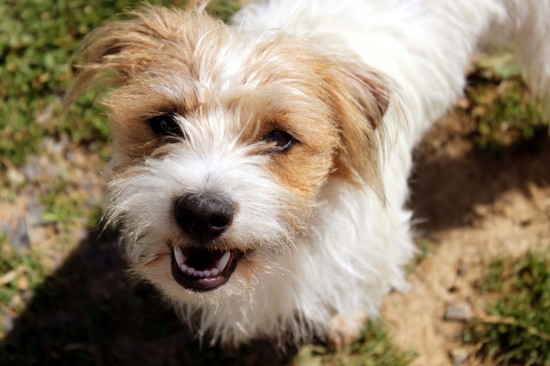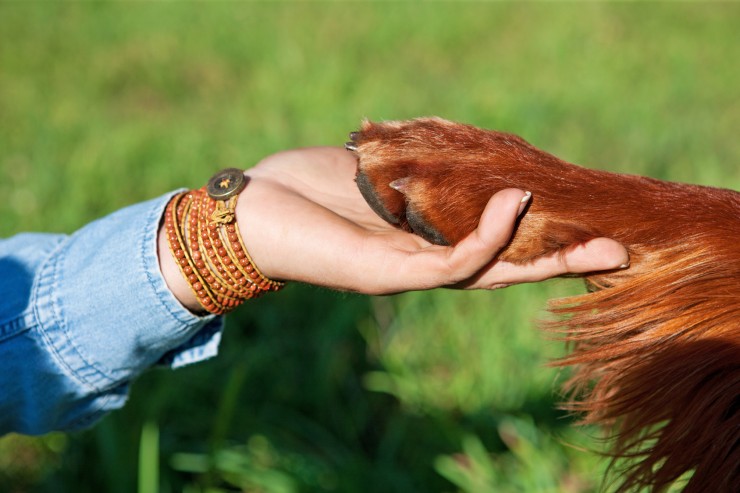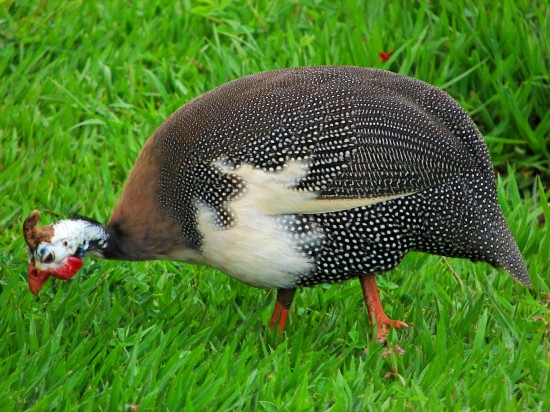

The well-trained dog should be obedient, thoughtful and well mannered, and look to their owners for direction and guidance on appropriate behaviour. Bad mannered dogs can be difficult to handle, annoy you and other people that your dog comes into contact with, and even potentially be dangerous if they are too rowdy or snap at you in certain situations. Dogs are naturally fairly lively animals with a true lust for life, and so exuberance and excitement in certain situations are perfectly appropriate and normal; but it is worth auditing your dog’s behaviour now and then to ensure that they are not overstepping the mark, and crossing the line into the territory of displaying bad manners.
Read on to learn about the top ten manifestations of bad manners in the dog.
Excitable dogs do have a tendency to jump up, particularly when playing or greeting someone. It can be difficult to strike the balance between enabling your dog’s play and letting them know that you are happy to see them, and keeping them from jumping up. Jumping up to get attention or to greet someone should be nipped in the bud, and is one of the most obvious manifestations of bad manners.
Dogs bark in a multitude of different situations, such as in warning, out of excitement, or to deter a predator. They may also bark in play, or to encourage you to throw a ball for them. However, if your dog barks to get attention on a regular basis, or barks because you have left them alone or are occupied with something else, teach your dog that this is not allowed, and is very rude!
Some dogs view their walks as an opportunity to lead you about and take you where they want to go, rather than the other way around. You should be firm with your dog and teach them that pulling is not allowed, and perhaps change your dog’s collar for a Halti head collar or a chest harness to help you to curb their pulling.
Resource guarding refers to the tendency of dogs to gather up their toys into one place and then defend the pile, sometimes barking, growling or even snapping. Dogs may also guard their food, and display defensive aggression if approached. This is the absolute height of bad manners, and something that you should tackle firmly, training your dog that this is simply not permitted or acceptable behaviour.
There are few things more annoying than trying to enjoy your meal, when everywhere you look, your dog seems to be there! Pushing against your legs, putting their head on the table, pawing at you, staring at you... The list goes on! Overt begging is usually a learned behaviour in the dog, as they have ascertained that it sometimes gains them a reward, so you must ensure that your dog is never rewarded for begging, and is closed out of the room when you are eating if they cannot learn to comply!
When you are paying attention to another person or animal, some dogs can become very jealous and try to get your attention, pushing in between you and trying to divert your attention from the other person or pet. This is very rude, and while you should ensure that you do not neglect your dog in favour of another animal or someone else, your dog should learn that they cannot be the centre of attention all the time and that being pushy about it is not permitted!
Another attention-seeking behaviour is obstructing you when you are going about your day; getting underfoot when you are walking about the house, blocking your path to get attention or generally interrupting you physically when you are engaged with something else. This is of course highly irritating, and something that should not be allowed or rewarded.
Dogs should respond to their name and the command that they are given in a timely manner, and not be selective about when they do what they are told! If your dog is caught up in a game or a chase they may be slower to respond than when their full attention is on you, but nevertheless, you should expect reliable compliance with commands every time you speak to your dog, and work on their training if you don’t get it!
Snapping is one of the seven deadly canine sins, and one that should be absolutely forbidden, banned, and not permitted or left unchecked at any point. Not only can snappiness be dangerous in itself, it can soon develop into other aggressive behaviours and potentially worse responses. Be very firm with your dog if they snap and let them know without any ambiguity that they are “in the dog house.” You may even want to consider hiring a training expert or canine behaviourist to help you to train this behaviour out of your dog if you run into problems on your own, as snapping really is something that is not acceptable or forgivable under any circumstances.
Dogs will sometimes find that one member of the family (often children) is something of a pushover, and will displace their role in the hierarchy of the family “pack” and take their place. This might manifest in any number of ways, such as by pushing their luck constantly with one family member when they wouldn’t dream of doing it with others, herding their people, becoming bossy, or disobeying one person in particular. Younger children cannot be expected to fully understand and address your dog in the way that dogs should be communicated with, so it is important that you manage your dog’s interactions with them and tackle this issue yourself. Do not permit your dog to boss anyone around or get away with things that they are not allowed to do, for the want of an adult to manage their behaviour.
 How To Disinfect And Care For Minor Scratches On Your Dog’s Skin
How To Disinfect
How To Disinfect And Care For Minor Scratches On Your Dog’s Skin
How To Disinfect
 7 Of The Best Dog And Cat Treatment Hints !
7 Of The Best Dog
7 Of The Best Dog And Cat Treatment Hints !
7 Of The Best Dog
 Is A Giant Schnauzer The Right Choice Of Dog For You?
Is A Giant Schnau
Is A Giant Schnauzer The Right Choice Of Dog For You?
Is A Giant Schnau
 The Joys Of Keeping Guinea Fowl
The Joys Of Keepi
The Joys Of Keeping Guinea Fowl
The Joys Of Keepi
 10 Quieter Dog Breeds For People Who Like A Laid-back Lifestyle
10 Quieter Dog Br
10 Quieter Dog Breeds For People Who Like A Laid-back Lifestyle
10 Quieter Dog Br
Copyright © 2005-2016 Pet Information All Rights Reserved
Contact us: www162date@outlook.com